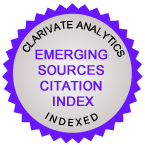Quality Management System Certifi cation in Companies from Transition Economies: Empirical Analysis
Abstract
The practice of quality management system certifi cation and impact of the internal and external factors to the managerial decision of a fi rm about the certifi cation are analyzed in the paper. The study is based on a sample of fi rms from the transitional economies. Special attention is paid to reveal similarities and differences in making decision motives between businesses of CIS countries, countries, which just became EU members and countries of Southern Europe, which are not members of EU. This allows to evaluate the role of economic development level and institutional conditions in the management improvement processes. Empirical cross-country analysis was held on the basis of "Business Environment and Enterprise Performance Survey" (BEEPS — joint initiative of the European Bank for Reconstruction and Development (EBRD) and the World Bank) dataset for 2002–2009 years. The binary logistic regression was used.
Keywords:
quality management, quality management system certification, determinants for quality management system certification, transitional economies
Downloads
References
The List of References in Cyrillic Transliterated into Latin Alphabet
Downloads
Published
How to Cite
Issue
Section
License
Articles of the Russian Management Journal are open access distributed under the terms of the License Agreement with Saint Petersburg State University, which permits to the authors unrestricted distribution and self-archiving free of charge.





